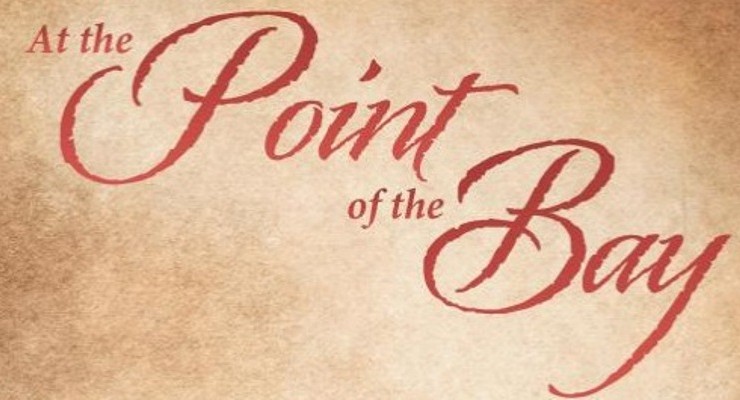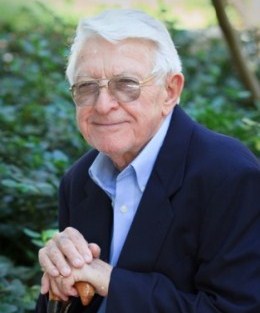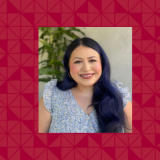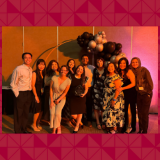
A Q&A with Ken Tye: Author of At the Point of the Bay
September 24, 2013
 As a student and teacher who recognizes the importance of inspiration, I have had the good fortune to find many members of the Chapman faculty who model exceptional practice. They live and breathe a commitment to education. Kenneth Tye is one such person. Through his life-long commitment to global and comparative education, he has shown me how we can reinvent ourselves and find new ways to positively impact education. Just visit the Global Education Yellow Pages, a web-based resource for educators, and you will see what I mean.
As a student and teacher who recognizes the importance of inspiration, I have had the good fortune to find many members of the Chapman faculty who model exceptional practice. They live and breathe a commitment to education. Kenneth Tye is one such person. Through his life-long commitment to global and comparative education, he has shown me how we can reinvent ourselves and find new ways to positively impact education. Just visit the Global Education Yellow Pages, a web-based resource for educators, and you will see what I mean.
With the release of his new book, At the Point of the Bay, Dr. Tye has once again illustrated the many ways teachers find professional outlets to provide opportunities for learning. The book tackles many issues that offer a window to many lived realities- an offering of diverse perspectives. This is a critical aspect of any effective classroom.
I took the opportunity to pose some questions about this new genre of writing. He generously provided responses. I guess it clearly illustrates his belief that, “Once a teacher, always a teacher!”
What prompted you to write historical fiction
?
Originally, I thought I might write a nonfiction book about Port Chicago, the town in which I grew up. It had an interesting history. For years I have been throwing articles, and other materials into a filing cabinet drawer. However, I am a big fan of three authors and have read almost all of their books: historical fiction by James Michener, Edward Rutherford, and Ken Follett. Three years ago, I thought I might change to writing historical fiction. For that, I needed to do some research; and, boy, did I luck out. I went to Martinez, CA to the Contra Costa Historical Society to find out what they had about the history of the area I have called the Point of the Bay. My daughter, Debbie, who is a teacher in Santa Ana USD, went with me and we went through the files, and found a lot. More importantly, the President of the Society contacted a local historian who came to talk with me. He has been an enormous help to me, particularly about Native Americas, Spanish, and Mexican settlers of the area. In fact, he and I have become very good friends.
When writing in the particular genre, where does the fiction begin and end
? Why Suisun Bay
?”
That is an exceptionally good question, and key to the work! In my case, I started with the facts of the people, the location, and the time of each segment of the history of the area. I grew up there (in Suisun Bay), and know it well.
From there, I thought of ways to tell the stories by using a combination of real and fictional people. For example, the Rancho Monte del Diablo, owned by Salvio Pacheco, was a real ranch. When I wrote about this ranch, I used some real material; but, importantly, I created my own stories from some of the facts —- e.g., fiestas, bull fights, bull and bear fights, dancing, cattle raising and tanning. I created fictional romance and stories of illness and treatment of Indians as the missions. Most important, I created a fictional ranch that allowed me to tell many of these stories as well as to make connections of people and events.
Looking back, would you say that your previous writing has prepared you for writing a fiction novel
?
My response to this is laughter (at myself). It also is probably the most important question you’ve asked.
Yes and no. The yes, I think, is obvious. I’ve written about 75 professional articles, monographs, chapters, and books, seven of the latter. That, of course, has helped me. In addition, I had a marvelous mentor, John Goodlad, for 14 years when I worked at an educational research center, off campus from UCLA. His first critique of one of my pieces was to send me to the library to get a copy of
The Old Man and the Sea
by Ernest Hemingway. I have made the same recommendation to a number of my students who seem to have initially thought that verbosity leads to good writing.
On the other hand, professional writing and writing fiction are very different. The professional “stuff” amounts to clearly telling people about an issue or research. The sequence usually is: set out the problem or the issue; tell what other people have said about the problem or issue; create an hypothesis or more that one hypothesis; test the hypothesis, and if its research tell how you’re doing the testing (If it isn’t really research — and that’s o.k., tell how you’ve come to your conclusions); report your results; and draw your conclusions. A statement such as this one takes the mystery out of doing a thesis or other research.
Fiction requires three different things, I think. First, it requires the writer to engage in deep description of characters and places — how are they dressed, what about their expression, mannerisms, and reactions? Second, it requires good dialogue — what do people say, and how, rather than the author telling the story? Some of the latter is necessary, but it is better when the characters can tell their own stories. Finally, and probably most important of all, you must have an imagination — before you write a segment, think about all of the above and determine how and where you want to bring things alive. I’m still learning how to do all of this. It’s not easy, but I love doing it. Also, I now read other peoples work with different eyes and appreciation.
Tell me about the characters who are real
.
As I have said, I have done a great deal of research before writing. At the point where I start to write, I need to decide whether a particular story can be more interesting if it is told by real people of by fictitious characters. Also, there sometimes is a need to keep a real person’s identity hidden. For example, I have used Sebastiano and Juanita, fictional characters, to tell a number of stories — e.g., The beginning of San Francisco, the Gold Rush, Bootlegging, the treatment of Native Americans at the missions.
Is the novel a way of expressing a commitment to intercultural understanding
?
Absolutely and thanks for asking this question. I’m not sure how many readers will recognize this. I think all readers should ask themselves about this issue and decide if a book is worth reading based upon the answer. Another way to answer would be to say, “Once a teacher, always a teacher.” If you were to examine this novel with the question, you would find stories that deal with: treatment of Native Americans by the Spanish and Mexicans; treatment of the Chinese, Mexicans, and Native Americans by the White Americans; some history of education of people with disabilities (Phil Ferguson helped me find sources for this); and the treatment of the Black Sailors in a segregated US Navy during WWII. I think I’ve done an adequate job with this book.
Is this novel appropriate for students
?
College level, yes. I’m actually thinking of trying to get University Professors of California History to put the book on their supplementary reading lists. While I, personally, think it would be o.k. for high school students, I don’t really think the system would agree with me. There is a rape, a house of prostitution, bootlegging, a suicide, and other things that people might object to for pre-collegiate students.
Thanks for asking the questions. I’ve enjoyed answering, and helping to get some clarity for myself.
Get your questions answered! Join Ken for a book signing event Thursday, Sept. 27, from 4 to 6 p.m. at Librería Martinez de Chapman University, 216 N. Broadway, Santa Ana.

